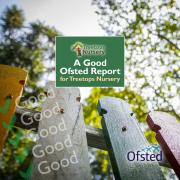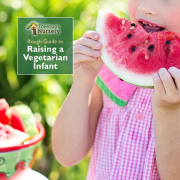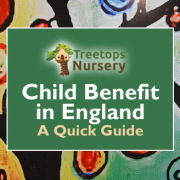Overcoming Childhood Obesity — & Why it Matters
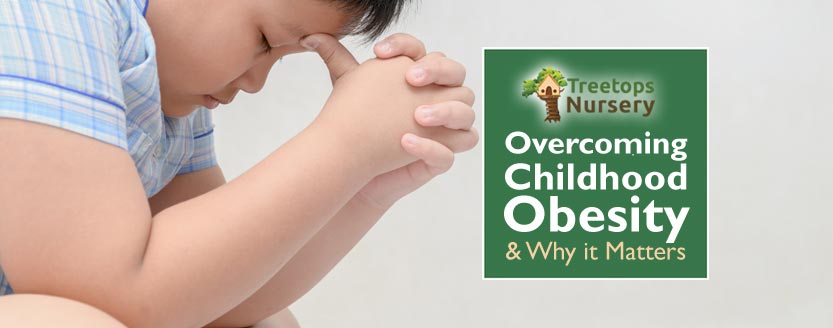
We previously covered the importance of healthy eating and exercise in children’s early years. Both play clear roles in a healthy lifestyle and in fighting potential weight and fitness problems. In today’s post we’ll take a closer look at obesity in young children, how to recognise it, and why it’s important to try to overcome it.
Obesity occurs when excess body fat accumulates in quantities that can be detrimental to health.
How to Recognise Obesity in Children
Apart from any obvious, physical signs, the easiest way to check whether your child has possible weight issues is to check their Body Mass Index (‘BMI’). While it’s not a perfect system, it’s an easy starting point to get a quick overview. The NHS has a great tool for measuring your child’s BMI, which you can access here. It’s quick, simple and free. Select the ‘Child’ tab at the top, enter their height, weight, date of birth, sex and the date of the measurements and then click the ‘calculate’ button at the bottom. Simple! The results are almost immediate and also include some useful 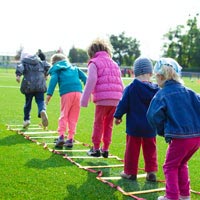 guidance and links. Your child will fall into one of 4 possible categories:
guidance and links. Your child will fall into one of 4 possible categories:
- Your child is underweight;
- Your child is a healthy weight;
- Your child is overweight;
- Your child is very overweight.
You may find that BMI results reference centiles. These are a way of comparing a child’s BMI to those of other children of the same age. They use data from Nationwide surveys, which offer a useful comparator. For example, a boy who is on the 60th centile weighs more than 60 out of 100 other boys of the same age in the survey. The healthy weight category for children falls between the 2nd and 91st centiles — quite a wide range.
Why Does Childhood Obesity Matter?
The reason this is important is summed up perfectly by the NHS:
“If your child is above a healthy weight now, they’re more likely to be above a healthy weight as an adult, which can lead to health problems in later life.”
Statistics around childhood obesity, and their ramifications, are startling:
- The age at which children are becoming obese seems to be getting worse i.e. reducing.
- By the time they start school, 1 in 5 children in the UK are either overweight or very overweight.
- Between year 6 and the age of 15, 1 in 3 children are overweight or very overweight — a very concerning statistic.
- Once children are obese, there’s a much greater chance that they will remain so as they grow older.
- By the time they reach adulthood, obese people are 7 times more likely to develop type 2 diabetes.
- Heart disease and depression are also statistically more prevalent in obese people.
- Premature death is twice as likely if you are obese.
 Socio-economic background matters too:
Socio-economic background matters too:
- Under-fives from deprived backgrounds are 2 times more likely to become obese.
- 11-year-olds from low-income backgrounds are 3 times more likely to become obese.
And society is suffering due to obesity too:
- More is spent by the NHS each year tackling the adverse effects of obesity than is spent on the fire service, police and judicial system combined.
All in all, fighting obesity early really matters!
How to Tackle Childhood Obesity
There are two clear ways that parents, guardians, carers and childcare professionals can help to ensure that children avoid weight problems and potential obesity. In essence, both come down to the child maintaining a healthy lifestyle:
- Through regular exercise, ideally starting from a young age so that good habits are formed early. Read our Guide to Early Years Exercise & Why it’s Essential here for full details.
- Through a healthy, balanced diet; one that contains the right food groups in the right amounts. Again, children should be doing this right from an early age so that eating healthily comes naturally as they grow older. Read our Guide to Healthy Eating for Preschoolers here for further information.
Both are great guides with some excellent background information, tips and more. So, perhaps bookmark the links and feel free to share any of our articles on social media or online. All we ask is that you link back to our original post(s).
A Healthy Start at Treetops Nursery in Willesden, London NW10
 The childcare professionals at Treetops Nursery do, of course, follow exactly this approach. We supply healthy, balanced, meals and drinks, which are freshly prepared on site each day using only the best ingredients. Babies, toddlers and preschoolers also get ample, rich opportunities for active play and exercise as part of their tailored learning and development programme. All this, together with the excellent early years curriculum at the nursery, gives them the very best start in life and clean, healthy foundations to build upon once they leave us to begin school at age five.
The childcare professionals at Treetops Nursery do, of course, follow exactly this approach. We supply healthy, balanced, meals and drinks, which are freshly prepared on site each day using only the best ingredients. Babies, toddlers and preschoolers also get ample, rich opportunities for active play and exercise as part of their tailored learning and development programme. All this, together with the excellent early years curriculum at the nursery, gives them the very best start in life and clean, healthy foundations to build upon once they leave us to begin school at age five.
If you are searching for the best nurseries for your baby or child in Willesden or near Willesden Green, Kensal Green or Harlesden you’ll find Treetops Nursery very hard to beat. Facilities and resources are excellent and the setting has a wonderful Ofsted report. If you’re considering a place here for your child, please contact us. We’ll be happy tell you more and to show you around. Please choose from the following:

